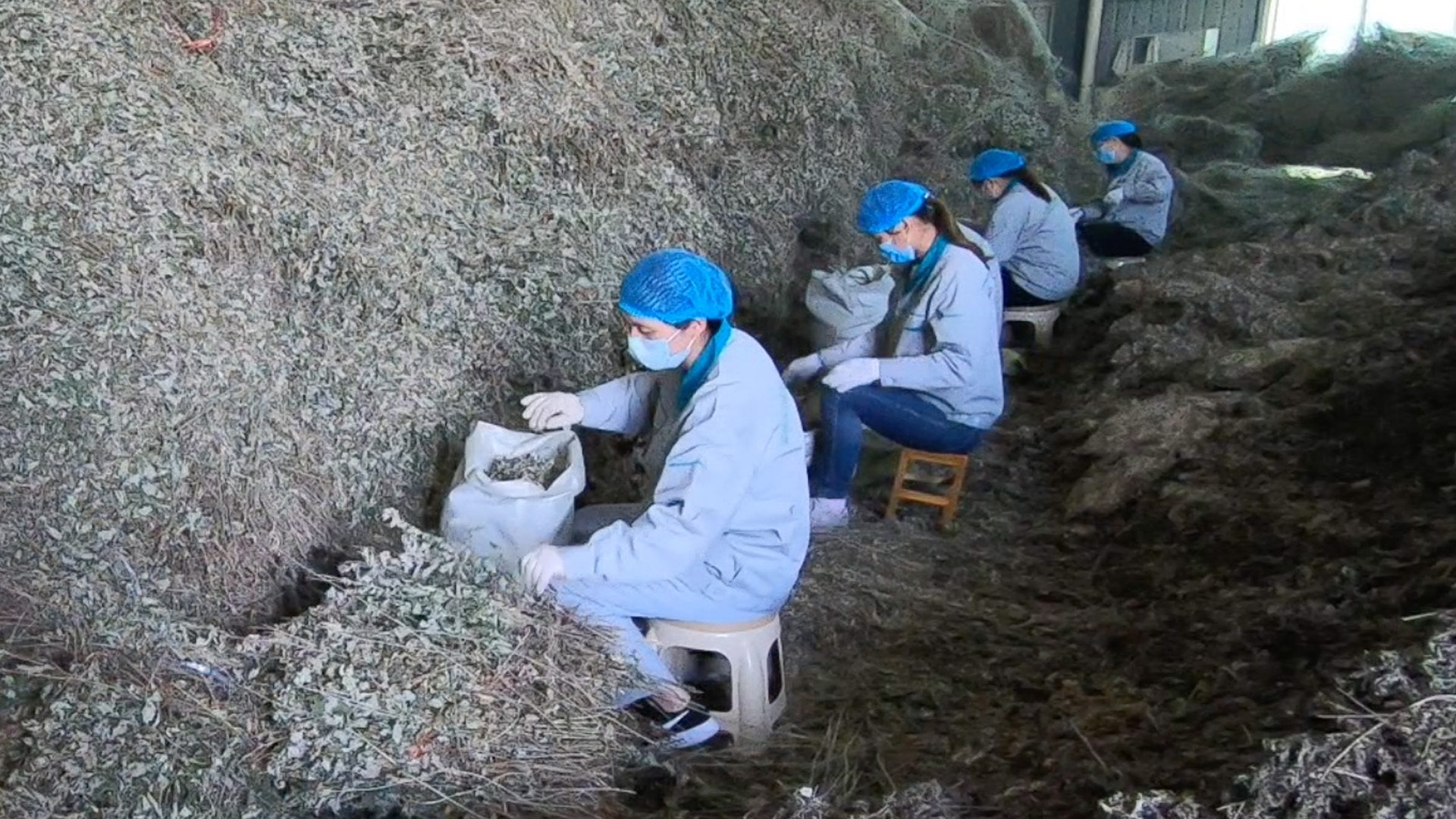
China
21:51, 17-Oct-2018
Wormwood industry creates jobs for villagers in central China
Updated
21:02, 20-Oct-2018
CGTN's Li Jianhua
02:15

Wormwood is widely used in traditional Chinese medicine to treat various diseases. And it's gaining popularity among Chinese for maintaining good health.
Now, a wormwood product company in the Fudao Township in central China's Henan Province is hiring local impoverished villagers, helping to alleviate poverty in the region.
Harvested three times a year, the wormwood plant – due to its medicinal feature – is helping maintain the employment rate in the village.
"We provide jobs for the villagers. They can plant wormwood in the field or work in the company. We teach them how to plant and harvest wormwood. And we sign contracts with the local villagers who suffer from poverty. We provide them with free wormwood seeds, then the company will buy the harvest from them," explained Jiu Tou Xian Ai's vice president of administration.
Some jobs in the company require a bit more skills, like wormwood stick making. It involves wrapping the ground wormwood plants and making them into sticks. The sticks can be burned over certain parts of the body and are believed to be capable of curing some diseases.
"My eldest child is in college, and my youngest one is in high school. It's not easy to support them. I didn't have a job before. For this job, it was easy to get the hang of it, and it could help support my family," said Shen Gailian, a local villager.
China's efforts to fight poverty
Chinese President Xi Jinping made poverty alleviation one of the country's signature policy issues after pledging in 2015 that China would lift nearly 70 million people out of poverty by 2020.
In addition, Chinese authorities in August released a guideline on the country's poverty alleviation efforts in the run-up to 2020.
Access to food, clothing, basic medical needs and a nine-year education are some of the priorities at the top of the agenda.
People whose annual income is lower than 2,300 yuan (about 338 US dollars) are considered to be living below the national poverty line.
By that standard, another 30 million Chinese are set to be lifted out of poverty by 2020, according to China's Leading Group Office of Poverty Alleviation and Development under the State Council.
"The country is placing an unprecedented amount of effort on alleviating poverty," Liu Yongfu, head of the government's Leading Group of Poverty Alleviation and Development in 2017. "With the active participation of all parts of society, it can be said that the battle against poverty has achieved significant results."
The Chinese central government spent 86 billion yuan (about 12.6 billion US dollars) on poverty alleviation in 2017, which is 30 percent more than the year before, according to the Ministry of Finance. And direct spending by central and local governments on the cause between 2013 and 2017 amounts to 461.2 billion yuan.
The funds have reportedly been used for infrastructure projects, as well as subsidies for education, healthcare and rural agriculture.
President of the World Bank, Jim Yong Kim, went on record as saying China's achievement in lifting 800 million people out of poverty since the 1990s was "one of the great stories in human history."
"The challenges we've met mostly come down to the poor villagers themselves, for instance, some of them are unable to work, and some don't have high working skills. In addition, different villages have different conditions in terms of infrastructure and facilities," said Li Qingyong, Mayor of Fudao Township, Henan Province.

SITEMAP
Copyright © 2018 CGTN. Beijing ICP prepared NO.16065310-3
Copyright © 2018 CGTN. Beijing ICP prepared NO.16065310-3